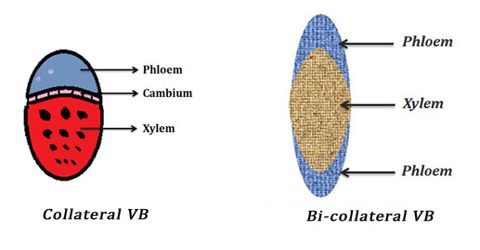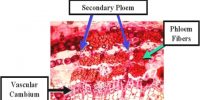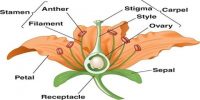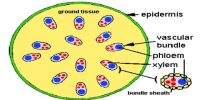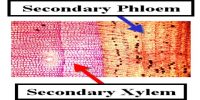Conjoint vascular bundle: When xylem and phloem of a vascular bundle lie on the same radius, it is called the conjoint vascular bundle. It is just an arrangement of how the vascular bundle i.e. the combination of xylem and phloem is arranged. Here the xylem and phloem are arranged together in the same radius. Here xylem and phloem together form a bundle. It may be of two types, such as-
(i) Collateral: It is a type of conjoint vascular bundle where xylem is arranged towards the interior (adaxial) and the phloem arranged towards the exterior (abaxial). In this type, xylem and phloem are arranged side by side in the same radius. In this Vascular bundle, only one patch of xylem and one patch of phloem are present. This may be either open or closed. Usually, xylem is seen towards the inner side and phloem towards the outer side. A conjoint collateral vascular bundle can be divided into two types on the basis of cambium, such as-
- Open: Xylem towards the inner side and phloem towards the outer side. Cambium is present between xylem and phloem, e.g., Dicot stem (Mangfera indica). In between xylem and phloem, cambium is present.
- Closed: Xylem towards the inner side and phloem towards the outer side. In between this, there is no cambium. Cambium is absent between xylem and phloem, e.g., Monocot stem (Oryza sativa). Therefore. the vascular bundle is called collateral closed.
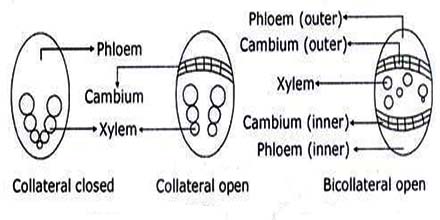
(ii) Bi-collateral: In this type of vascular bundle, xylem is placed in the middle and there are two patches of phloem and cambium tissue at each side. In this type of conjoint vascular bundle, phloem is present in two groups, one outside the xylem and the other inside the xylem (i.e., xylem is located between two strands of phloem). Thus the vascular bundle will have outer phloem, outer cambium, xylem, inner cambium, and inner phloem, e.g., Dicot stem.
Function:
Conjoint vascular bundles are seen in stem and leaves. Those in which the two types of tissues are separated from one another. In the conjoint arrangement, the xylem is found in the interior while phloem is towards the exterior and called adaxial and abaxial respectively. They serve the major function as any other vascular bundle for transmitting sugar, nutrients, water, etc across the plant.
